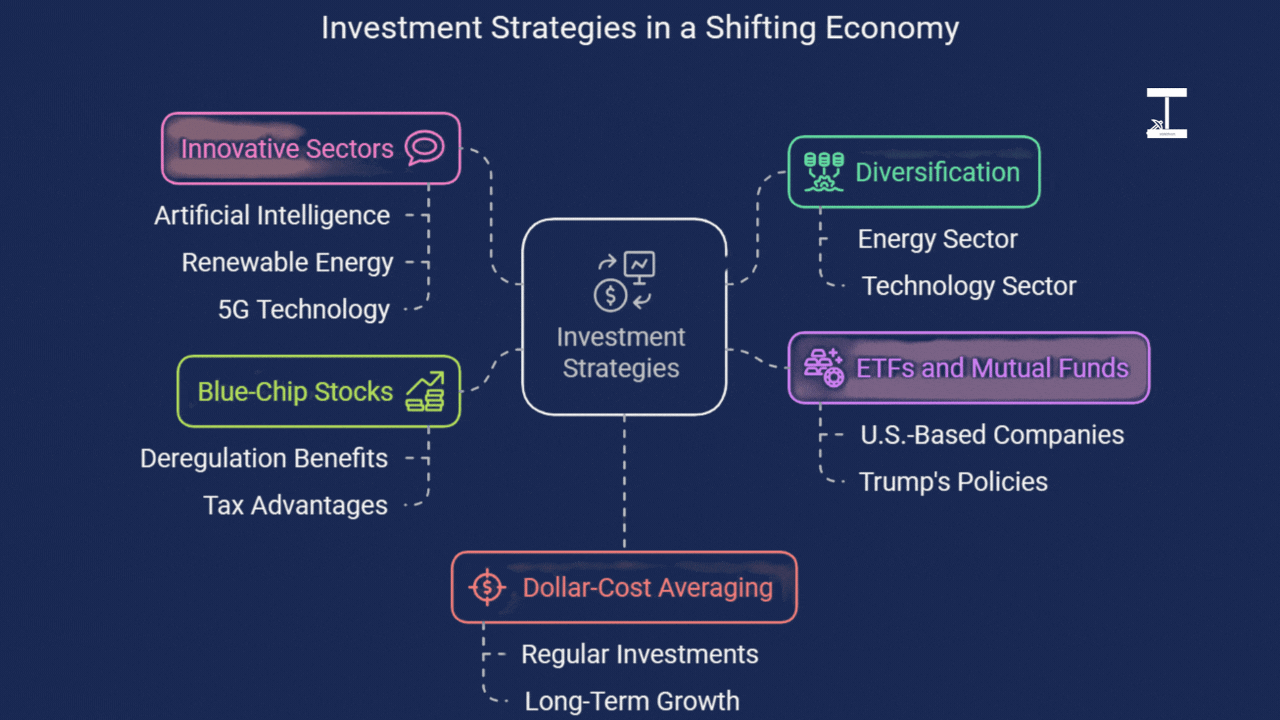With Donald Trump returning to the White House in 2025, the financial landscape is expected to undergo shifts influenced by his economic policies and leadership. The next five years could present exciting opportunities for investors, particularly those looking to build long-term wealth. Understanding how Trump’s administration could shape the economy will be crucial to making smart investment decisions during this period.
The Trump Economic Agenda: Growth, Deregulation, and Tax Cuts
Under Trump’s leadership, the U.S. economy saw growth fueled by tax cuts, deregulation, and policies that favored business expansion. If these policies continue in his second term, investors can expect a business-friendly environment that supports entrepreneurial ventures and corporate growth.
Trump has been particularly focused on reducing regulations, especially in sectors like energy, finance, and technology. This approach may lead to increased profits for companies in these industries. For instance, the continued deregulation of the energy sector could give a boost to both fossil fuels and alternative energy sources like natural gas and clean energy. This creates investment opportunities in companies and ETFs targeting energy-focused assets.
Tax cuts were also a key feature of Trump’s first term, especially the corporate tax rate reduction that was designed to spur business activity. If such tax policies remain in place, they could stimulate further economic growth. For individual investors, this might mean higher stock prices and better returns from companies that benefit from these favorable tax cuts.
Infrastructure and Innovation: Areas to Watch
Trump has frequently discussed the need to invest in U.S. infrastructure, and this could be a major focus of his second term. A large-scale effort to rebuild roads, bridges, airports, and other aging infrastructure could create significant opportunities in construction, engineering, and materials sectors.
Public-private partnerships could become an attractive investment avenue as the government seeks to modernize infrastructure. Additionally, there may be rising demand for companies offering technology solutions for smart cities, sustainable infrastructure, and transportation innovation. These sectors could see growth as Trump’s administration prioritizes infrastructure development.
In addition to infrastructure, Trump’s “Made in America” policies may bring about a resurgence of domestic manufacturing. Sectors like automotive, technology, and steel production could benefit from this, presenting opportunities for long-term growth. As American manufacturing gets a boost, investments in these industries could yield favorable returns.
Key Investment Strategies

Navigating the potential shifts in the economy under Trump’s leadership calls for smart, forward-thinking investment strategies. While market fluctuations are inevitable, a focus on diversification and long-term growth can offer the best results.
ETFs and mutual funds are among the best tools for investing in a changing landscape. These funds allow investors to access a wide range of sectors, from energy to manufacturing to infrastructure, through a single investment. Look for ETFs that focus on U.S.-based companies benefiting from Trump’s policies. Sectors like energy, technology, and defense are expected to receive continued support, which may lead to growth in these industries.
For those more risk-averse, blue-chip stocks are a reliable option. These established companies tend to thrive in periods of deregulation and favorable tax environments, offering steady dividends and capital appreciation.
More adventurous investors may want to explore innovative sectors like artificial intelligence, renewable energy, and 5G technology. With government investments likely to continue in these fields, there’s potential for growth through targeted ETFs and mutual funds.
Another strategy worth considering is dollar-cost averaging. By investing a fixed amount on a regular basis, you can reduce the impact of market volatility and take advantage of long-term growth. This strategy is particularly helpful if you’re uncertain about the timing of your investments but still want to benefit from the broader upward trend of the market.
A Look Ahead
The next five years could be a period of significant opportunity, particularly in industries aligned with the Trump administration’s economic goals. Growth, deregulation, and infrastructure development will likely remain key themes that shape the financial markets. As an investor, staying diversified and keeping a long-term perspective will be crucial to making the most of these opportunities.
At the same time, it’s important to remain flexible. Policies and global events can change unexpectedly, and markets may evolve in ways that are hard to predict. Staying informed and adaptable will help you navigate these uncertainties and position yourself for success in the years to come.
This article is for informational purposes only and should not be considered professional advice.



